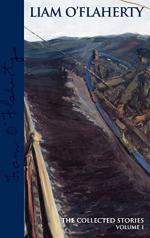
|
| Name: _________________________ | Period: ___________________ |
This test consists of 15 multiple choice questions and 5 short answer questions.
Multiple Choice Questions
1. "His enemy had been hit" (98) is an example of what technique?
(a) Charged language.
(b) Honorific diction.
(c) Passive voice.
(d) Parallelism.
2. At the end of the story, the reader learns that the story has been taking place on the corner of what street?
(a) Christchurch.
(b) Donnybrook.
(c) O'Connell.
(d) Lifford.
3. In order to fool his enemy, what does the sniper lift over the parapet?
(a) His rifle.
(b) His hat.
(c) His head.
(d) His jacket.
4. On the rooftop where the sniper is lying, there is a parapet. What is a parapet?
(a) An enclosed opening to the floor below.
(b) A chimney.
(c) A low wall at the edge of the roof.
(d) A stairwell.
5. What river is near the sniper's position?
(a) The Shannon.
(b) The Thames.
(c) The Corrib.
(d) The Liffey.
6. The narrator says that the sniper can hear the "dull panting" (96) of the enemy armored car. This is an example of which technique?
(a) Oxymoron.
(b) Onomatopoeia.
(c) Simile.
(d) Personification.
7. When the sniper turns over the body of his enemy, whom does he discover it to be?
(a) A total stranger.
(b) His priest.
(c) His commander.
(d) His own brother.
8. After he calms down, what does the sniper decide to do next?
(a) Get off the rooftop and report to his commander.
(b) Rest for a few minutes before he tries to move.
(c) Bandage his wound more carefully before he tries to move.
(d) Get off the rooftop and check on the identity of his enemy.
9. Toward the end of the story, the sniper feels "remorse" (98). What is he feeling?
(a) Regret.
(b) Confusion.
(c) Fury.
(d) Boredom.
10. The conflicting descriptions of the sniper that make him sound both young and mature are an example of what technique?
(a) Allusion.
(b) Oxymoron.
(c) Paradox.
(d) Personification.
11. What do the Republicans want?
(a) A united Ireland under British rule.
(b) A united Ireland under joint rule between the British and the Irish.
(c) A divided Ireland, one part ruled by Ireland, one part ruled by Britain.
(d) A united Ireland under Irish rule.
12. What nearby area of the city is under heavy fire?
(a) The Four Courts.
(b) Christchurch.
(c) Donnybrook
(d) Drumcondra
13. Once he is wounded, what is the sniper's first priority?
(a) He needs to get off the roof before dawn.
(b) He needs medical attention.
(c) He needs to find and kill the old woman.
(d) He needs to report to his field commander.
14. What is the source of the sniper's respect for his fallen enemy?
(a) He can tell that his enemy was also a soldier.
(b) His religious respect for life.
(c) He is a fellow Irishman.
(d) The man was a good shot.
15. The sniper's face is described as "ascetic" (96). What does this imply about the sniper?
(a) He is able to discipline himself and sacrifice for his beliefs.
(b) He is not fully aware of the damage that the war will do.
(c) He does not have the same ability to empathize as most people do.
(d) He has conflicting emotions about the act of killing.
Short Answer Questions
1. How does the enemy sniper respond to the protagonist's ruse?
2. What bridge is near the sniper's position?
3. In the context in which it is used in "The Sniper," how is "draught" (96) pronounced?
4. How are the sniper's eyes described?
5. In his distress, what does the sniper do with his revolver?
|
This section contains 583 words (approx. 2 pages at 300 words per page) |

|




